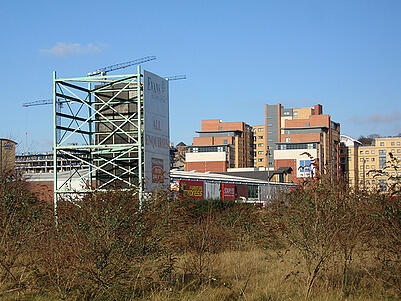Cloud Migration Blog
Migrating Brownfield Servers to the Cloud – Part 1
By Scott Colgan on Feb 15, 2013 1:40:59 PMIn the IT world there is a saying, “Today’s Greenfield, is tomorrow’s Brownfield.” So what does that mean? To answer this question we must first understand what Greenfield is and what Brownfield is.
Greenfield
In networking, a Greenfield deployment is the installation and configuration of a network where none existed before. Greenfield developments happen when you start a brand new project; it’s like having a clean slate development. No legacy code laying around, no old development to maintain. You’re starting fresh, from scratch with no restrictions on what you’re doing.
Here are a few examples for Greenfield development:
*A new startup wants application X built. Application X has never been built before. Therefore application X is a Greenfield endeavor.
*Building a new e-commerce solution from the ground up.
*Implementing a new rules engine for your company from the ground up.
Brownfield
A Brownfield deployment, in contrast, is an upgrade or addition to an existing network and uses some legacy components. Brownfield developments happen when a business decides to develop or improve upon an existing application infrastructure. As an upgrade is implemented into an existing solution, the development is said to be Brownfield.
Here are a few examples of a Brownfield development:
*Adding a new feature to software that was developed last year.
*Altering the functionality of the code to enhance the performance of an application.
*Upgrading the code-base to expand the working set of functionality across the board.
Going back to the saying, “Today’s Greenfield, is tomorrow’s Brownfield,” basically means a couple of months after any type of IT asset or project is new (Greenfield), it eventually becomes a Brownfield. So how does Greenfield and Brownfield deployments pertain to cloud computing? Very few organizations that move to the cloud are Greenfield deployments. Many already have some type of server and/or cloud infrastructure in place, meaning they fall into the Brownfield category. A tool like RiverMeadow’s cloud migration SaaS easily migrates cloud resources into and between cloud environments, as-is.
In the second half of our two- part article we will go over the checklist for migrating Brownfield services to the Cloud.
RiverMeadow Software Inc. develops industry-leading software that automates the migration of physical, virtual and Cloud based servers (live and as-is) into and between public, private and hybrid clouds. Without agents or downtime the RiverMeadow’s services dramatically reduces the cost and complexity of cloud migration and disaster recovery, enabling Service Providers to quickly, easily and cost-efficiently deliver the benefits of cloud elasticity to enterprise and SMB customers. For more information contact us at info@rivermeadow.com.
Photo Credit: russelljsmith
